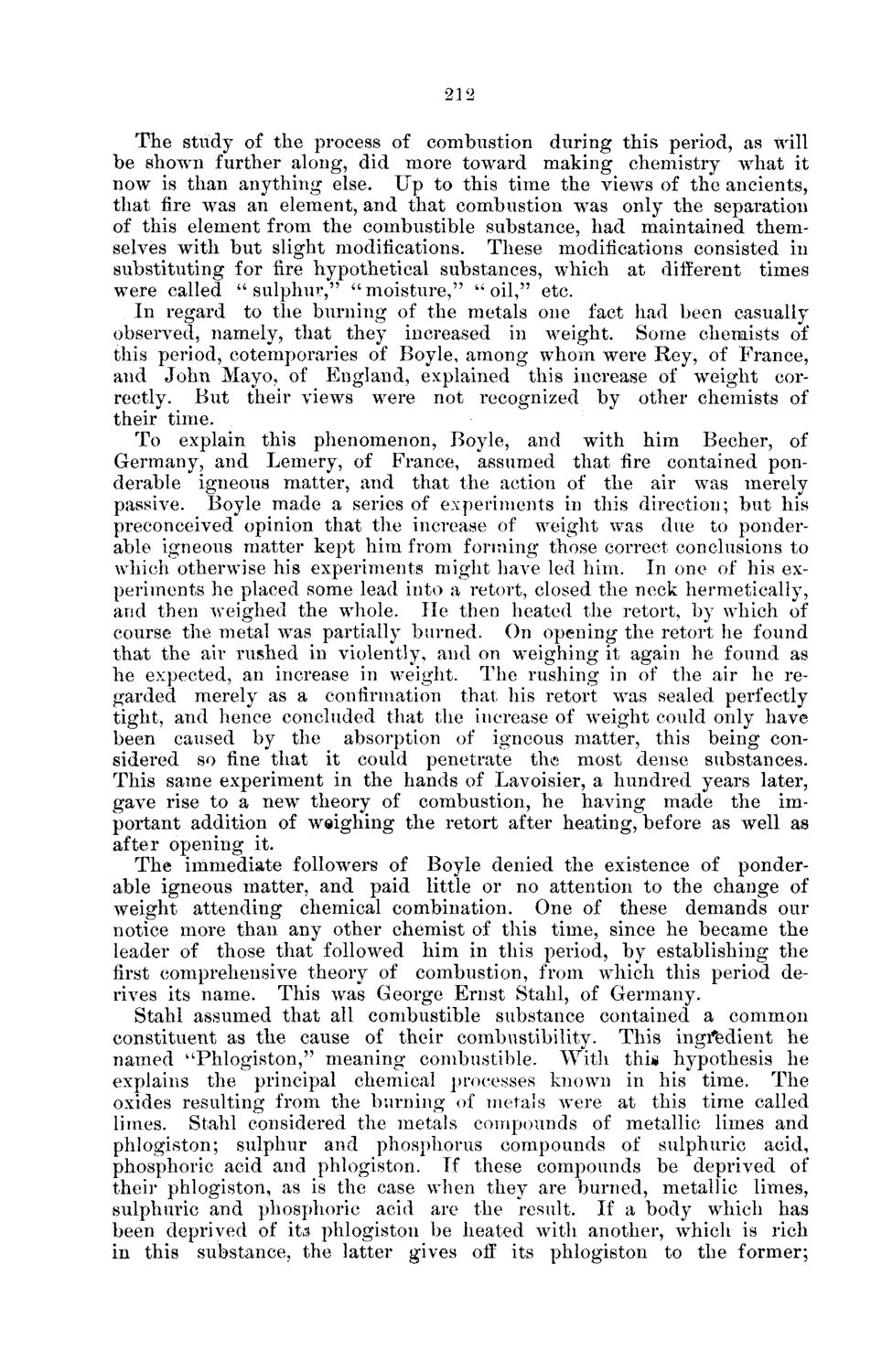| |
| |
Caption: Board of Trustees Minutes - 1878
This is a reduced-resolution page image for fast online browsing.

EXTRACTED TEXT FROM PAGE:
212 The study of the process of combustion during this period, as will be shown further along, did more toward making chemistry what it now is than anything else. U p to this time the views of the ancients, that fire was an element, and that combustion was only the separation of this element from the combustible substance, had maintained themselves with but slight modifications. These modifications consisted in substituting for fire hypothetical substances, which at different times were called " s u l p h u r , " "moisture," " o i l , " etc. In regard to the burning of the metals one fact had been casually observed, namely, that they increased in weight. Some chemists of this period, cotemporaries of Boyle, among whom were Key, of France, and John Mayo, of England, explained this increase of weight correctly. But their views were not recognized by other chemists of their time. To explain this phenomenon, Boyle, and with him Becher, of Germany, and Lemery, of France, assumed that fire contained ponderable igneous matter, and that the action of the air was merely passive. Boyle made a series of experiments in this direction; but his preconceived opinion that the increase of weight was due to ponderable igneous matter kept him from forming those correct conclusions to which otherwise his experiments might have led him. In one of his experiments he placed some lead into a retort, closed the neck hermetically, and then weighed the whole. l i e then heated the retort, by which of course the metal was partially burned. On opening the retort he found that the air rushed in violently, and on weighing it again he found as he expected, an increase in weight. The rushing in of the air he regarded merely as a confirmation that his retort was sealed perfectly tight, and hence concluded that the increase of weight could only have been caused by the absorption of igneous matter, this being considered so fine that it could penetrate the most dense substances. This same experiment in the hands of Lavoisier, a hundred years later, gave rise to a new theory of combustion, he having made the important addition of weighing the retort after heating, before as well as after opening it. The immediate followers of Boyle denied the existence of ponderable igneous matter, and paid little or no attention to the change of weight attending chemical combination. One of these demands our notice more than any other chemist of this time, since he became the leader of those that followed him in this period, by establishing the first comprehensive theory of combustion, from which this period derives its name. This was George Ernst Stahl, of Germany. Stahl assumed that all combustible substance contained a common constituent as the cause of their combustibility. This ingredient he named "Phlogiston," meaning combustible. W i t h this hypothesis he explains the principal chemical processes known in his time. The oxides resulting from the burning of metals were at this time called limes. Stahl considered the metals compounds of metallic limes and phlogiston; sulphur and phosphorus compounds of sulphuric acid, phosphoric acid and phlogiston. If these compounds be deprived of their phlogiston, as is the case when they are burned, metallic limes, sulphuric and phosphoric acid are the result. If a body which has been deprived of its phlogiston be heated with another, which is rich in this substance, the latter gives off its phlogiston to the former;
| |